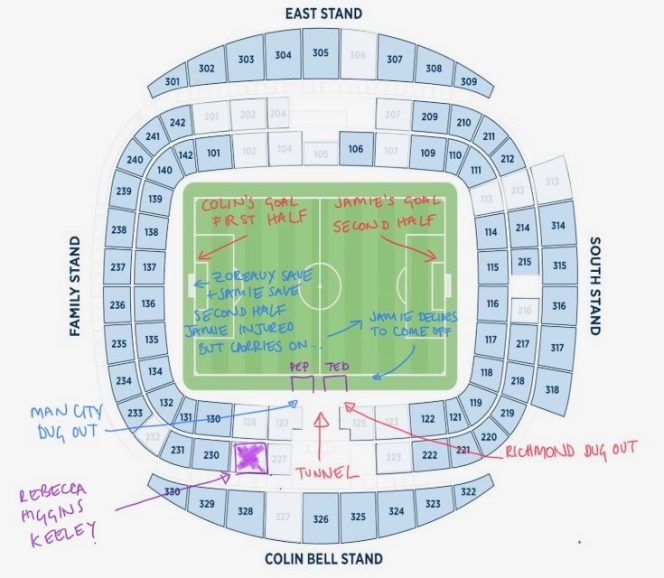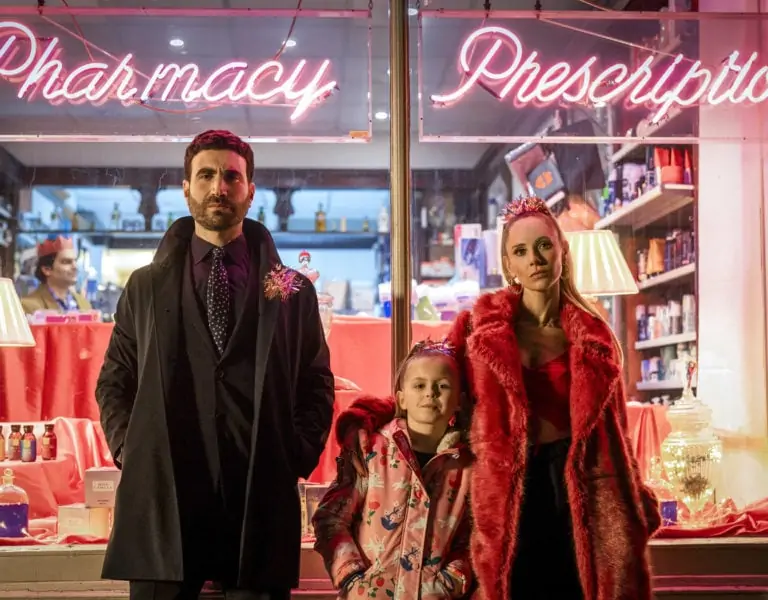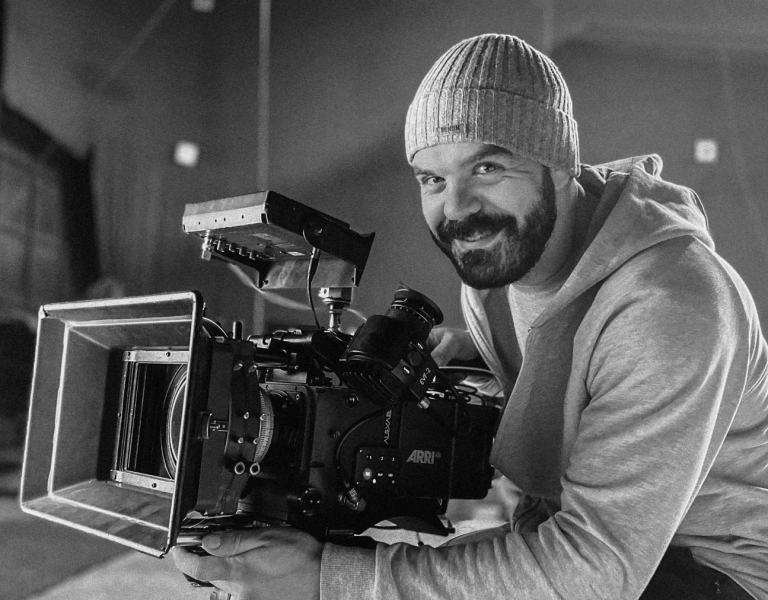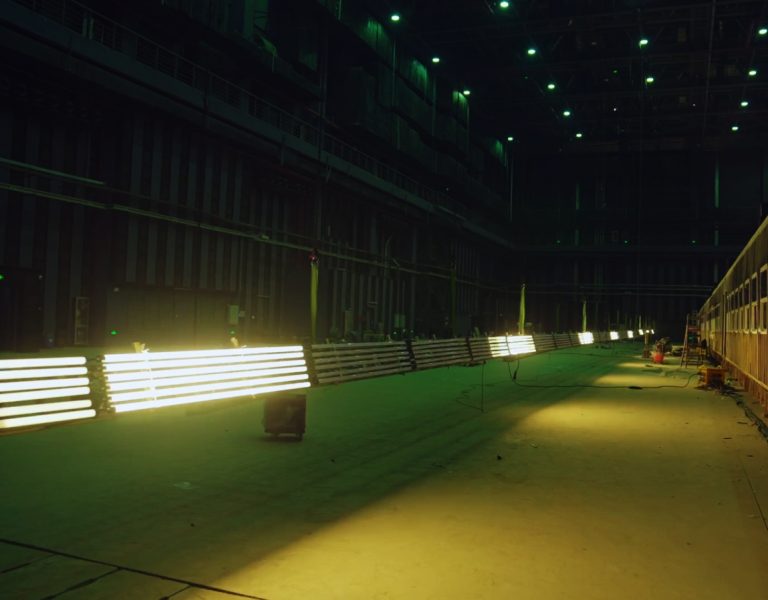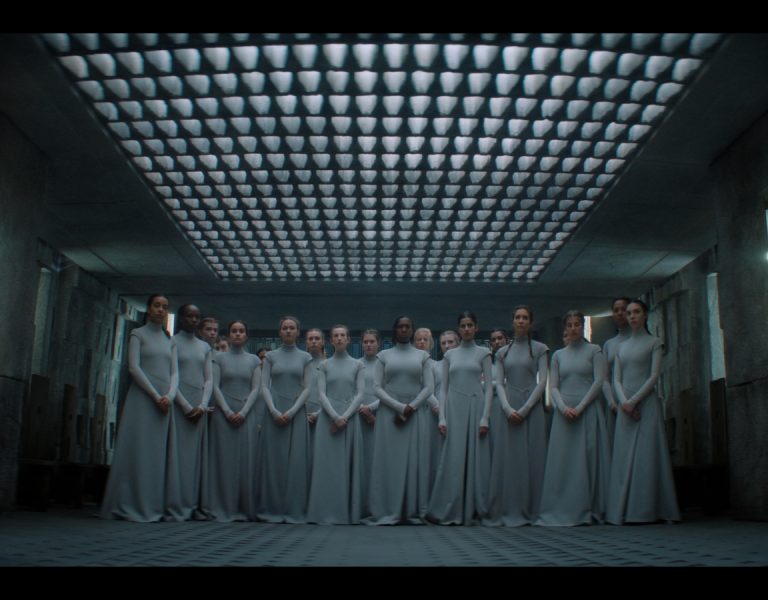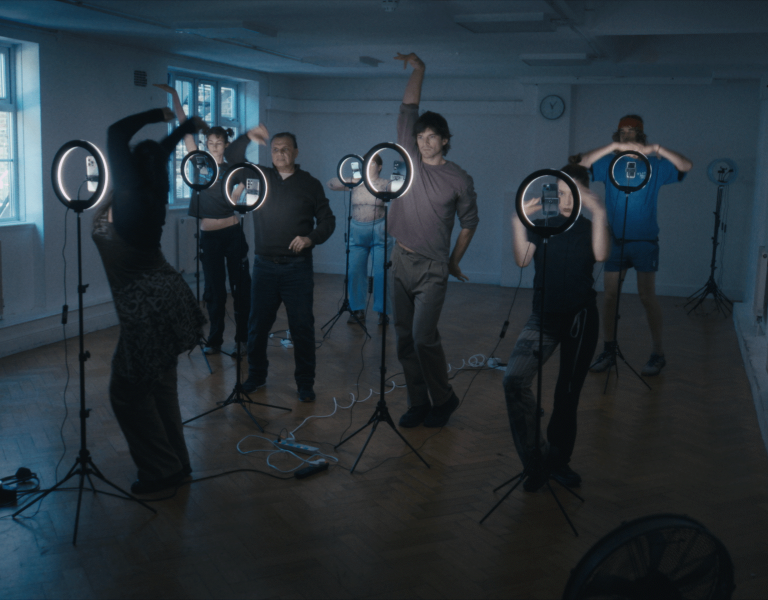TEAM SPIRIT
As another chapter of fish-out-of-water football comedy Ted Lasso comes to a close, cinematographers David Rom and Vanessa Whyte reveal how they lensed some of season three’s most iconic sequences.
An innovative approach was required by David Rom to create a sewer in a Victorian arch in East London.
Ted Lasso and its incredible ensemble cast was a very different challenge to many of my previous projects. Season three pushed those challenges to another level.
An early draft of the first episode asked for the whole team to visit a sewer for Ted to impart his usual wisdom. COVID, however, was still around and sewers were seemingly out of bounds, so a creative approach was required.
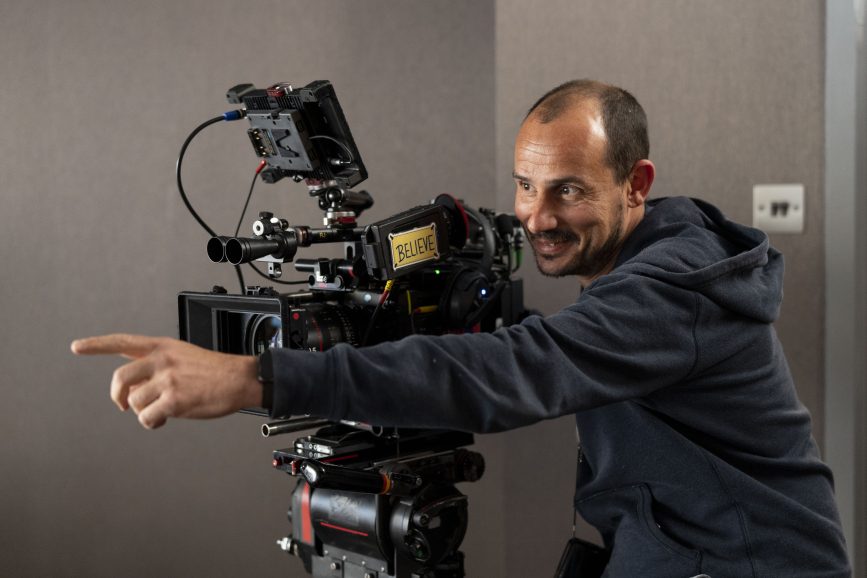
Most problems I’ve run into before are solved by a multidisciplinary solution and this was no exception. Locations, production design, SFX and VFX as well as lighting pulled together to create a sewer from an East London Victorian arch at Bishopsgate Goodsyard. Paul Cripps, our designer, along with first block director M.J. Delaney, chose a spot that would give architectural interest and depth. The challenge was to light a football team lined up against a wall in a short tunnel exposed to daylight and turn it into a sewer…
With the help of gaffer John Attwood, I designed a lighting plan that would use mostly practicals and a source of daylight as if leaking inside from above. Practicals were run along the centre of the tunnel. I had numerous bulkheads along the wall to pull our cast away from the background and a practical stream was created with both ends of the tunnel blocked off and an ARRI S360 positioned deep as a side light. An HMI bounced into a water to create ripples. Haze was used to help push light into the shadows and the entire tunnel was wet down, with slime added to help catch light.
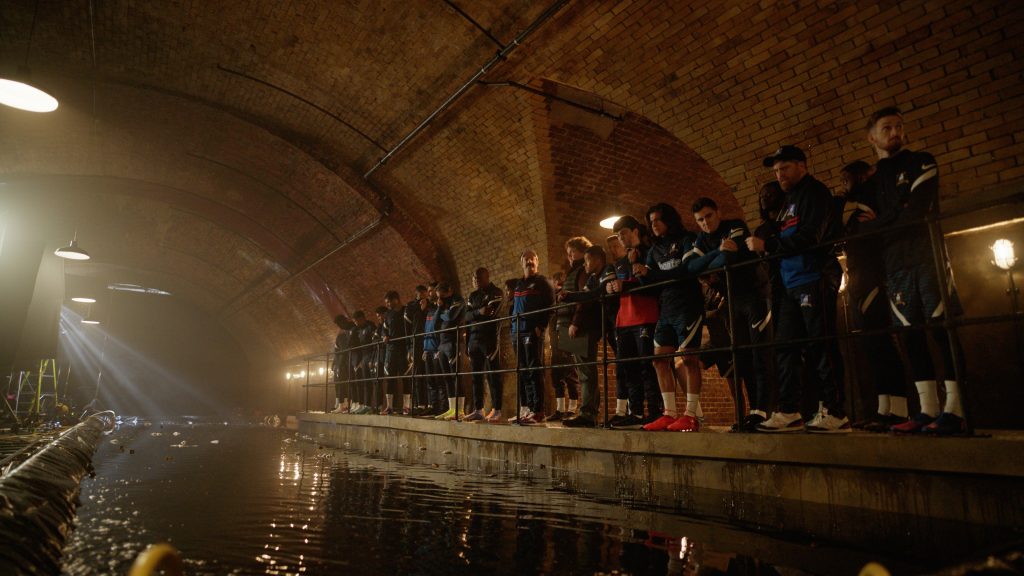
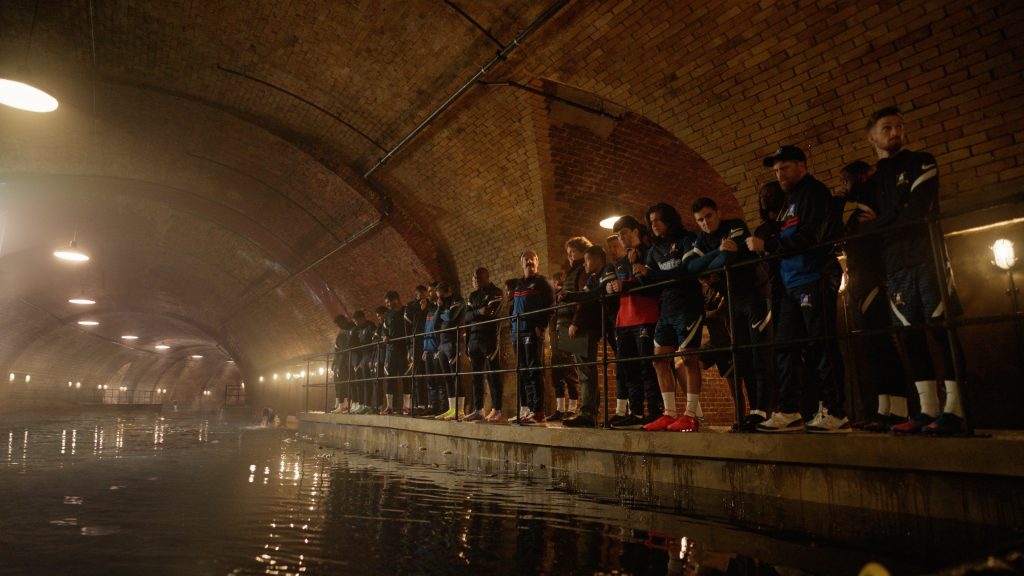
James MacLachlan, our post supervisor, helped ensure all the elements would work together. The idea was to replicate the practical lighting and create an extended tunnel with a curve along with reflections in the stream while keeping an element of mood. The final results looked natural and more like a real location which was very satisfying and highlighted how important working with other departments can be to create a final image, especially with so many options available in post. I was able to light and create a feeling I wanted in a more controllable way than a real sewer, but also with many real elements of the subterranean architecture which would have been difficult to build.
Lighting the team against a wall and avoiding all shadows was impossible and I embraced occasional shadowing. Ted Lasso is a light-hearted show but the visual challenges when working with such an ensemble cast made it one of the most rewarding.
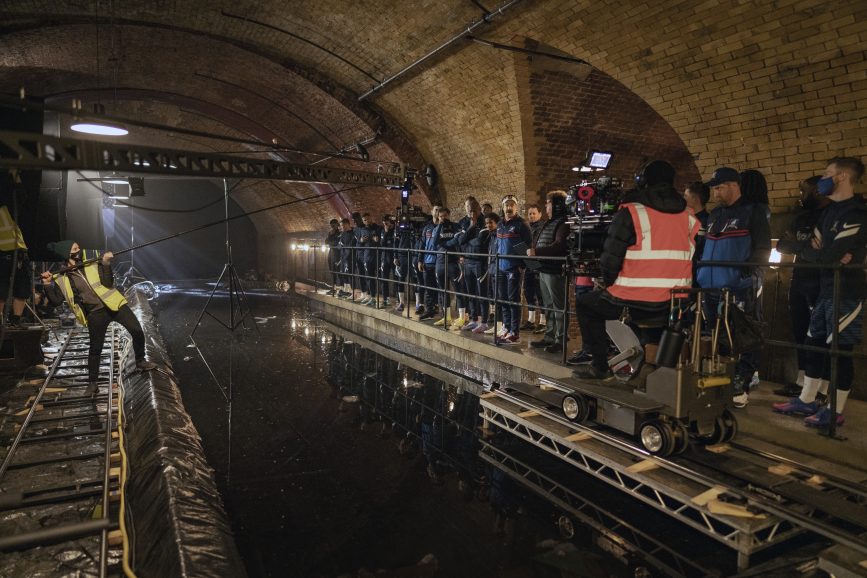
–
Vanessa Whyte explores the challenges of lensing Ted Lasso’s high-octane football matches.
When shooting a football match on Ted Lasso, the most challenging part as a DP is trying to create a unified sequence from what is often shot over many days, sometimes weeks apart. The owners’ box is shot separately to the coaches in the dugouts, the match play separately to any narrative drama that happens on the pitch during the match, and the final scene will be a combination of footage shot at a real stadium, blended with CGI extensions, a crowd of 300 supporting artists (SAs) morphs into tens of thousands of fans, not to mention any extra drama beats that may come from the fans watching the crowd. Lastly, we need to provide ‘TV coverage’ that will appear on various sets and characters’ screens in subsequent scenes. The aim is not just to seamlessly blend these shots into one short sequence, but also to deliver the narrative punch.
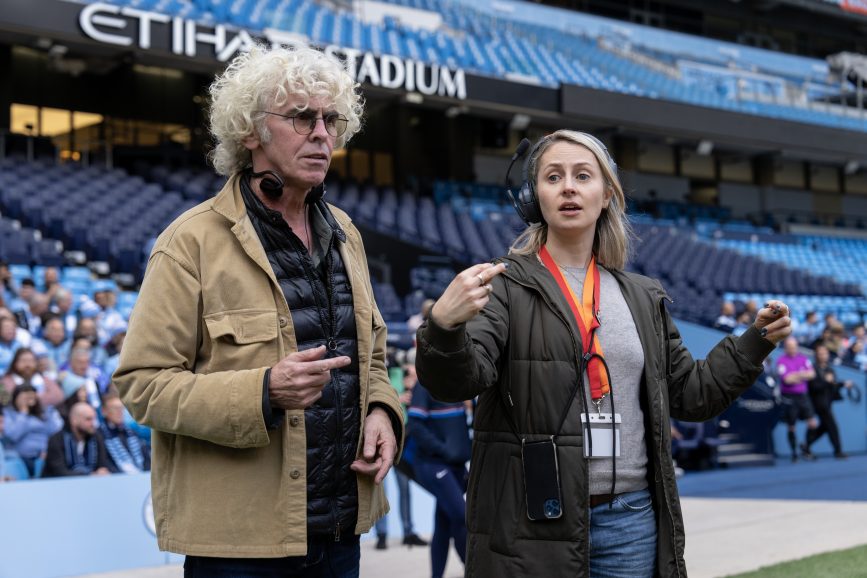
In episode 11 of season three, “Mom City”, we shot at Manchester City’s Etihad Stadium under strict limitations; even the astroturf on the sidelines had to be protected from our equipment. With many recces and meticulous planning, we were able to shoot our drama sequences on the sidelines and dugouts, employing cranes, track, and dolly and ronin work, as well as up in the owners’ box craning over a crowd of 250 supporting artists. For this, Declan Lowney, the director, and I worked closely with key grip Anthony Ward and VFX supervisor James MacLachlan.
In the final episode, “So Long, Farewell”, AFC Richmond and its owner, Rebecca Welton, come head-to-head with their bitter rivals West Ham, owned by Rebecca’s ex-husband and villain of the show, Rupert Mannion. This is the ultimate match that the season had been leading up to. Suddenly, our world had to expand – production designer Paul Cripps extended the existing dugout and owners’ box sets to include adjacent ones for the visiting teams so our usual working space where we would normally place green screens, textile frames or lights was very reduced, whilst the story possibilities grew with having the opposing teams cheek by jowl.
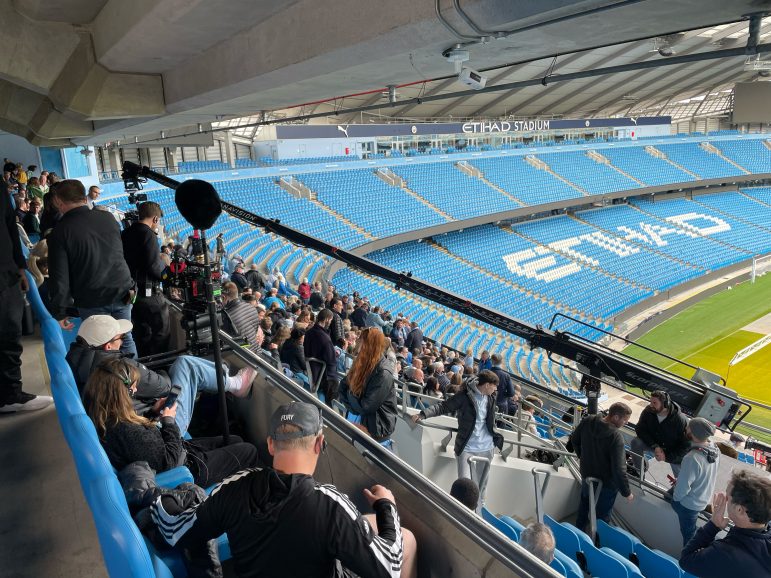
In the dramatic climax of this match, Rupert storms onto the pitch and pushes the West Ham coach to the ground, witnessed by his ex-wife and friends in the owner’s box, the players, the Richmond coaches, and the TV cameras. That’s a lot of coverage! We were faced with the challenge of how to shoot this one sequence across many days and locations.
As with almost all Premier League teams, Crystal Palace, whose Selhurst Park stadium stands in as the home of our heroes AFC Richmond, won’t permit the film crew on the grass, so any work we did there had to be carefully considered. When Rupert enters from the tunnel, we used a 300mm lens shooting over the pitch at the start his journey out of the tunnel, and a high-angle 135mm from back in the stands to provide Rebecca’s eyeline for this.
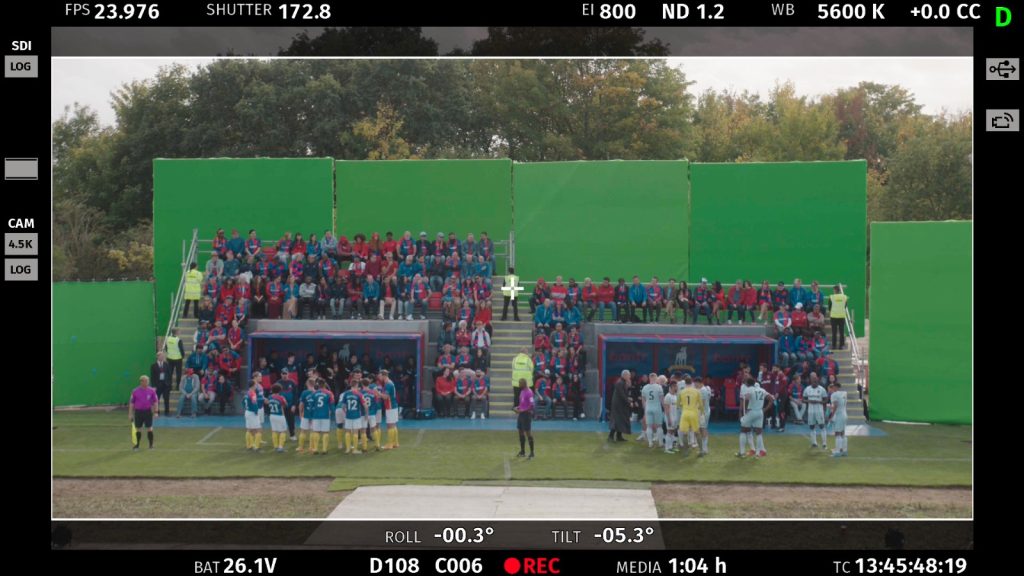
This is then picked up on our backlot dugout set at Hayes & Yeading United Football Club as a Ronin shot against green screen, and we switch to a Scorpio 45’ crane over the back of the set for Rebecca’s eyeline. On the backlot we are able to cover the scene in a regular narrative sense, bringing the crane around the front to provide the TV gantry footage, then we jump back again to Selhurst Park for Rupert’s shameful walk off the pitch, covered on a Ronin. We employed a low angle here to ensure we didn’t see the empty pitch, but it allowed us to see the stadium architecture and seating – later filled in with many CGI ‘sprite’ fans – as well as against our hundreds of SAs chanting as he exits.
We also have the other half of the story as witnessed by Rebecca, and for her coverage we build decks out over the stands of Hayes & Yeading and use jibs to ensure we can cover eyelines to both goals as well as any action on the pitch itself, in this case a long lens side angle looking to Rupert as he leaves his box and then into close-ups for her watching the scene on the pitch, and finally swinging to the other side as Rupert leaves.
Building a sequence like this, which may be shot over several weeks, presents a huge technical challenge as well as a dramatic one, knowing where to build the narrative beats and how to cover every characters’ arc, their eyelines within the match, where they’re looking at any given moment in an environment that is partly real, partially CGI and all very piecemeal until it finally comes together in post-production. Every episode presents a new puzzle that needs to be carefully pieced together between the director and DP, as well as the football unit, led by Pedro Romhanyi and second unit DP Richard ‘Buffy’ Dunton, guided by the VFX supervisor James MacLachlan. And lastly, of course, the grading process is central to binding it all together as one.
